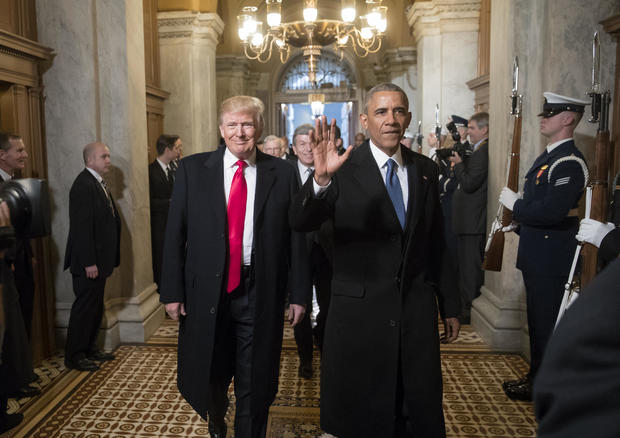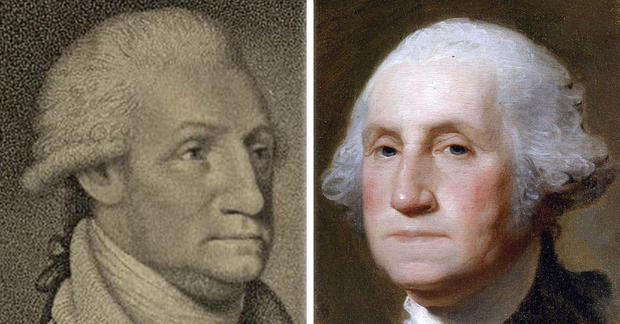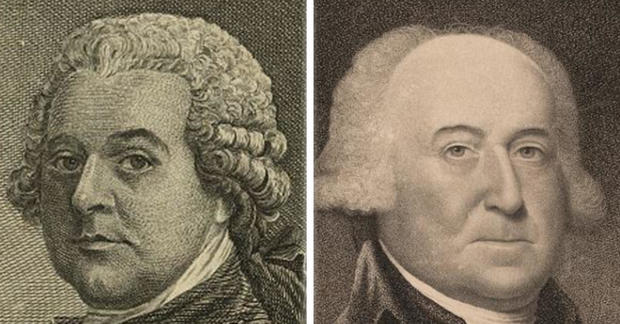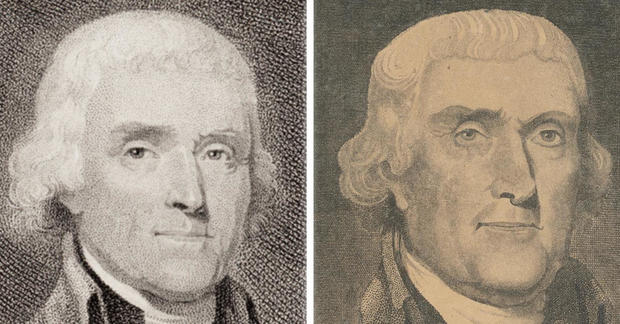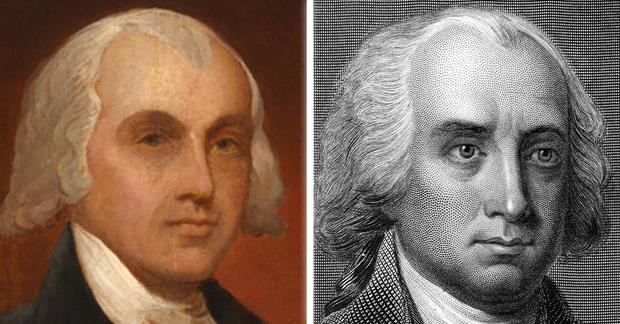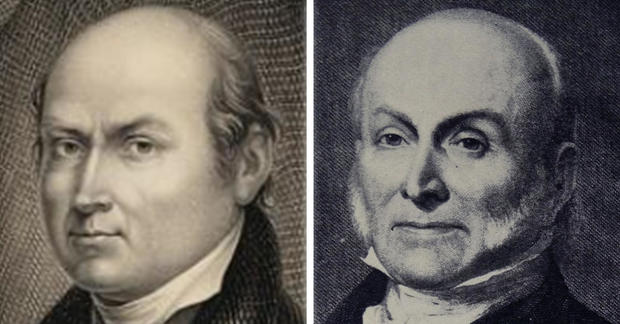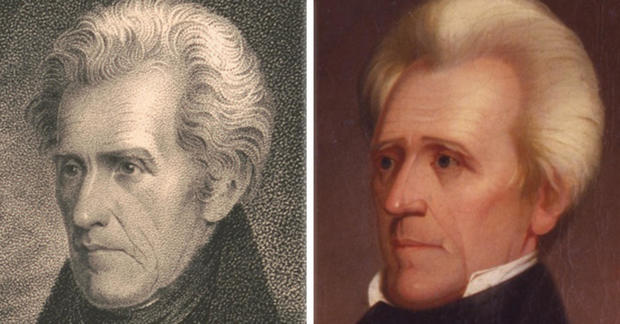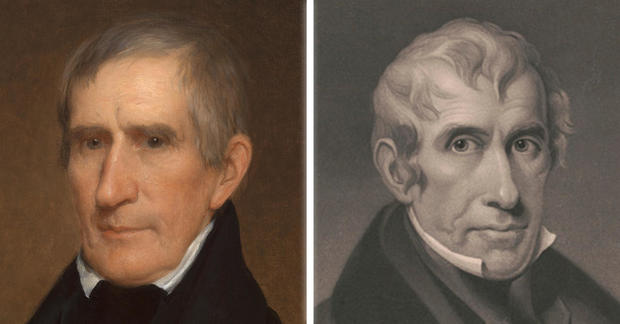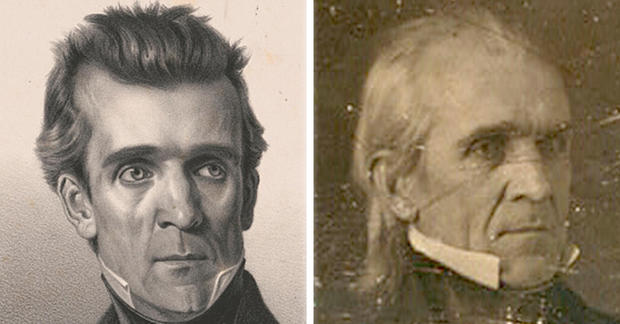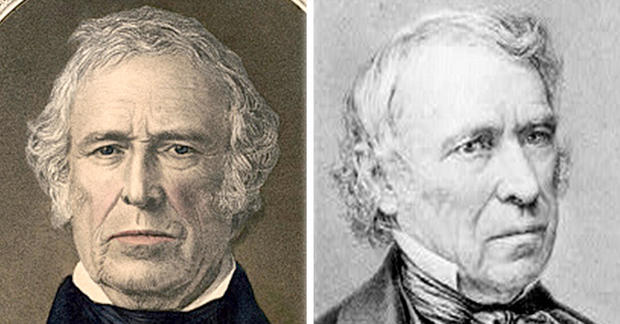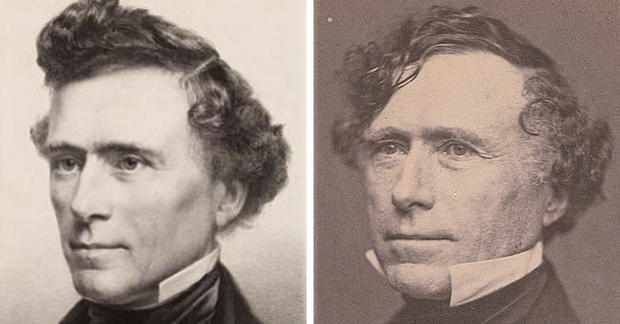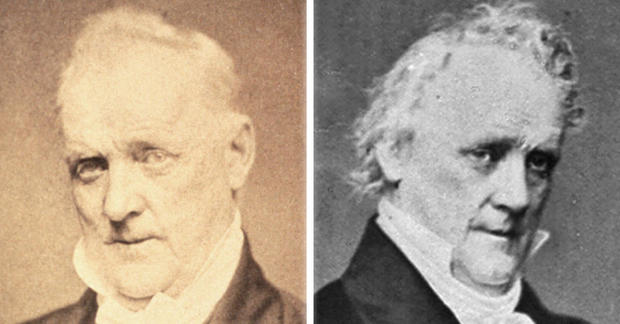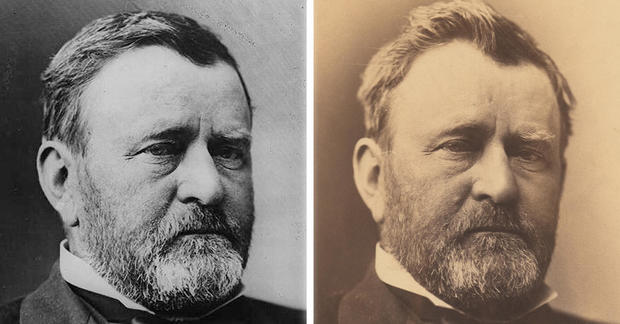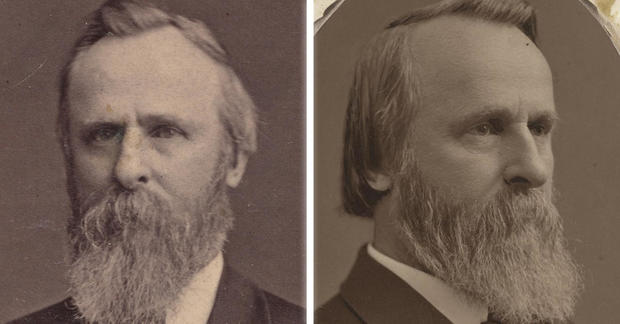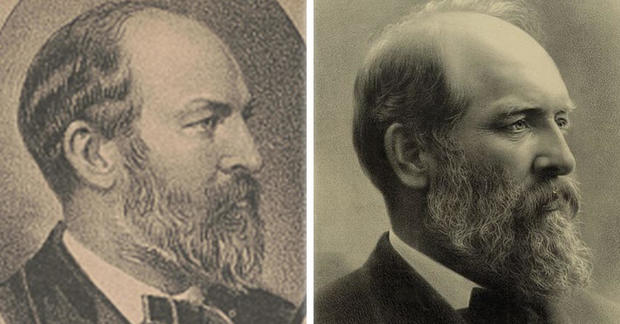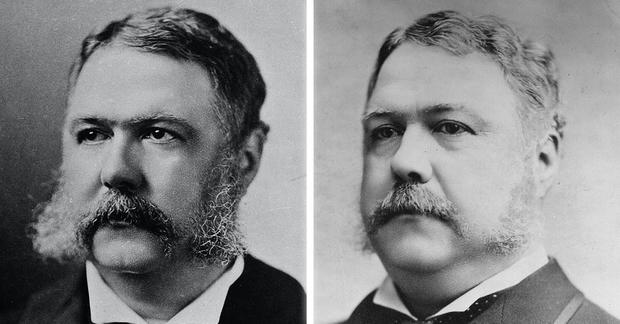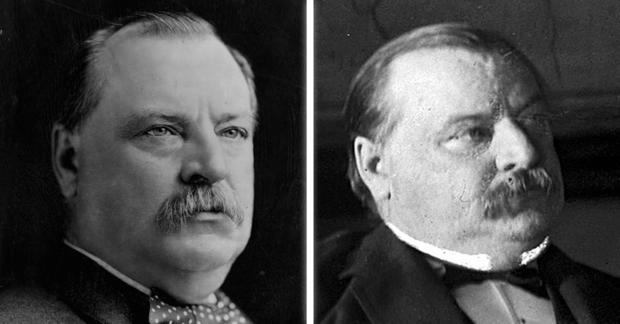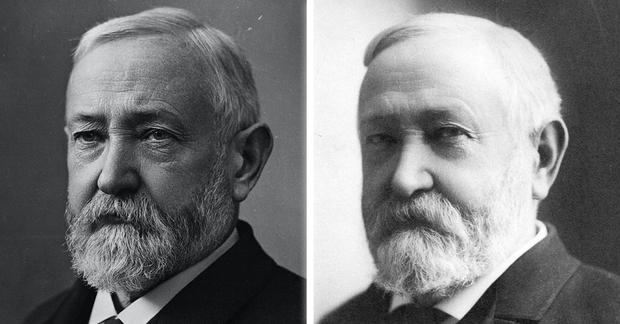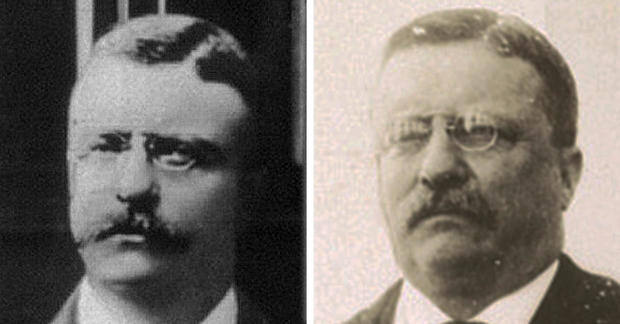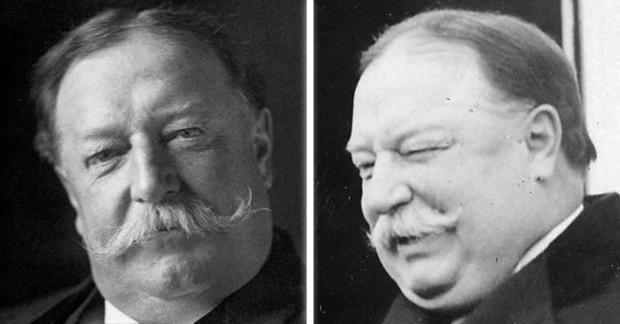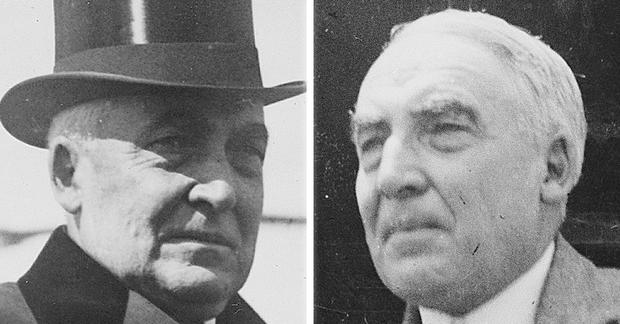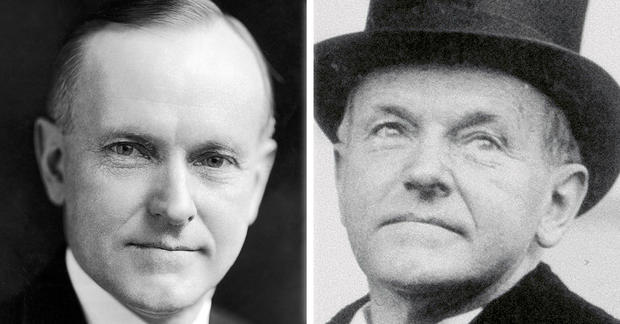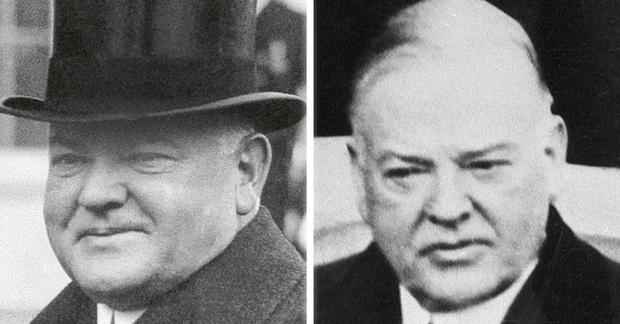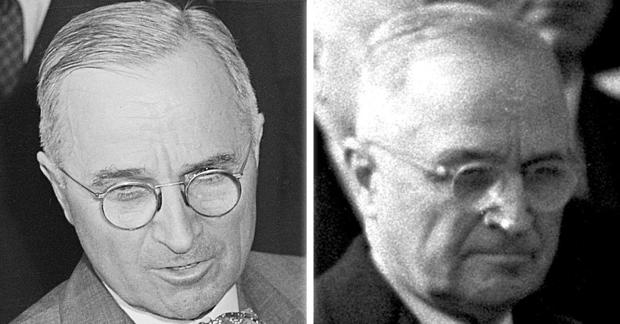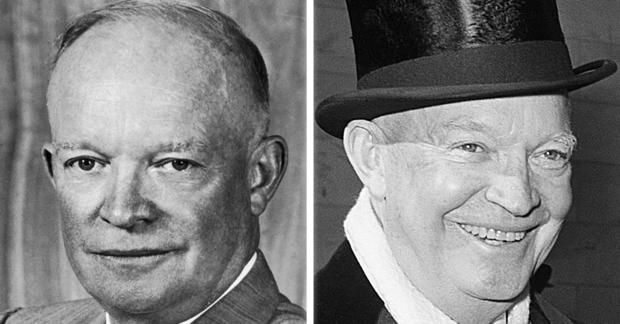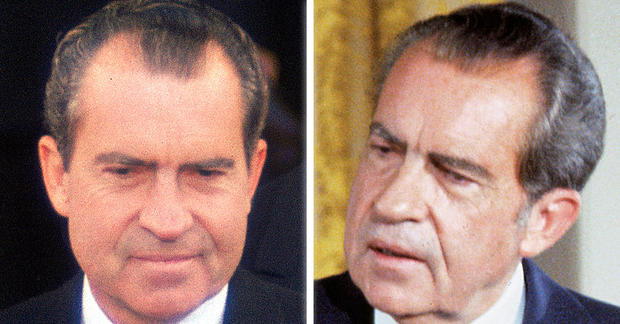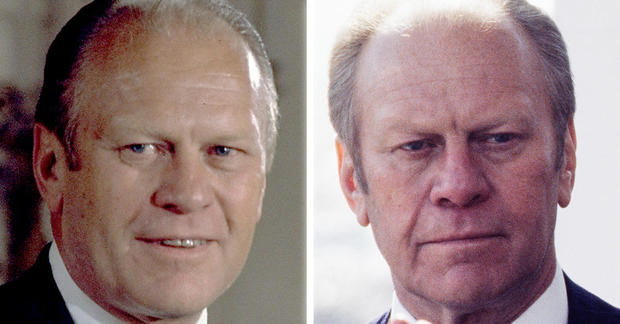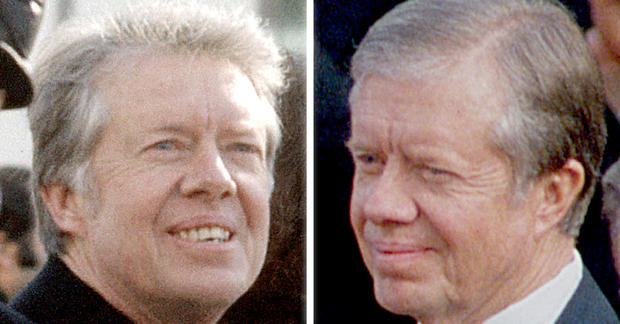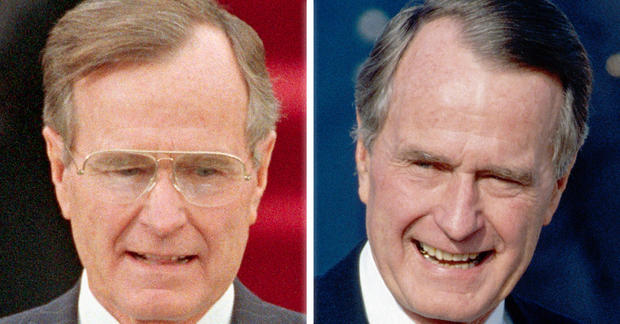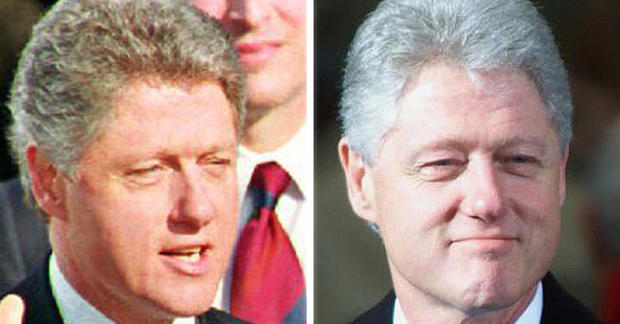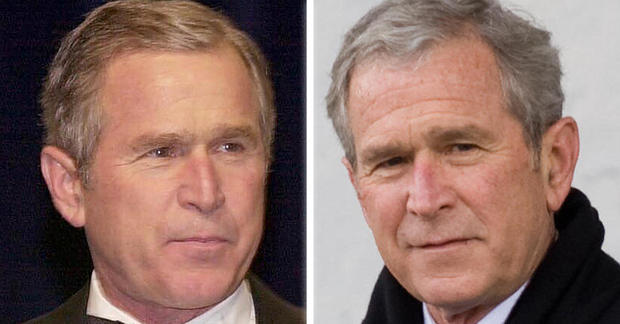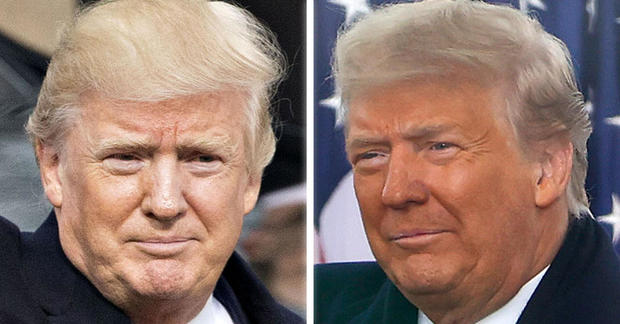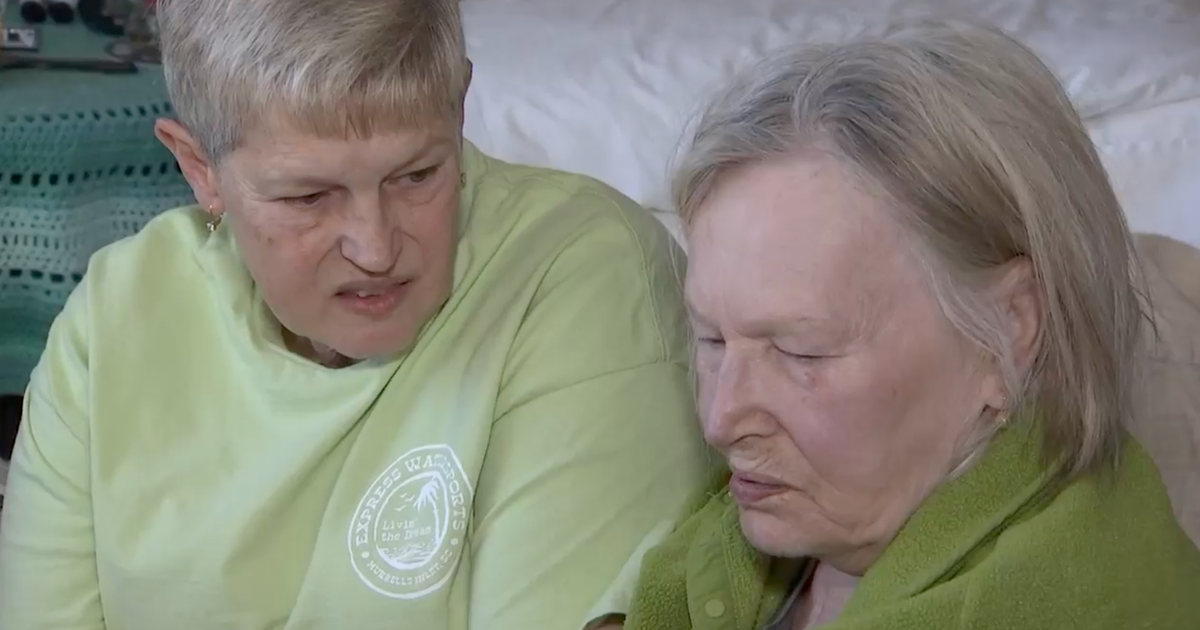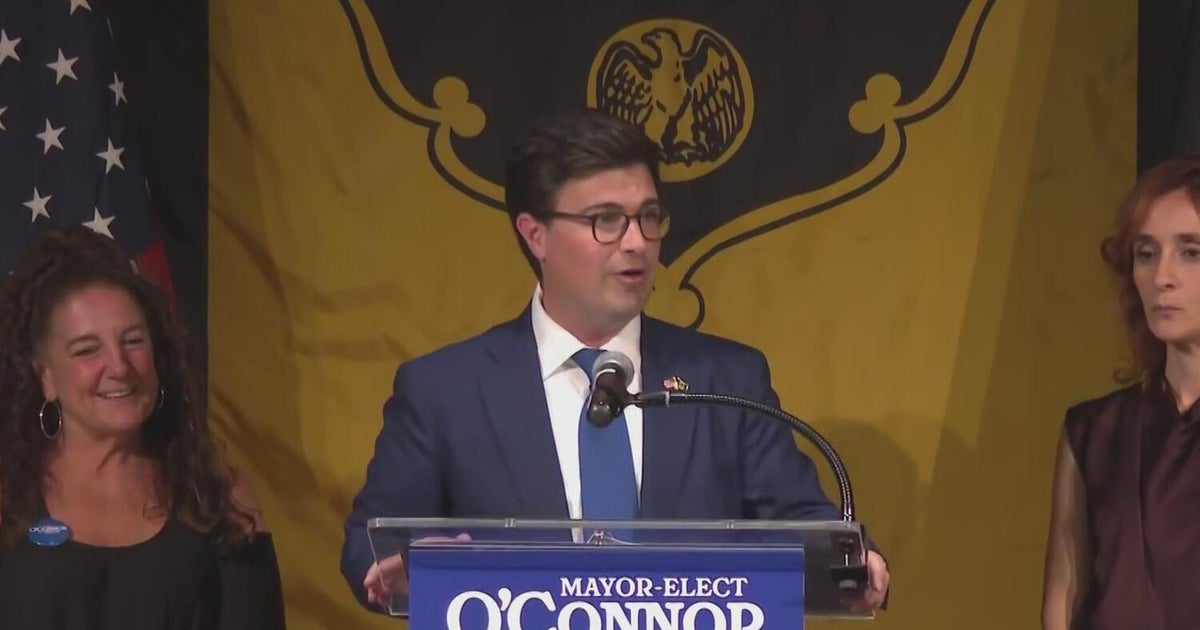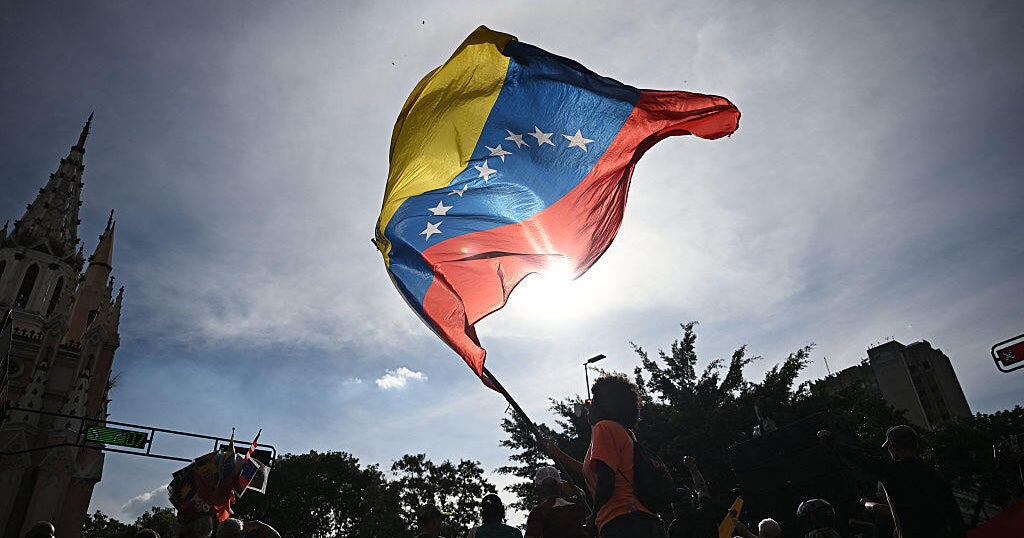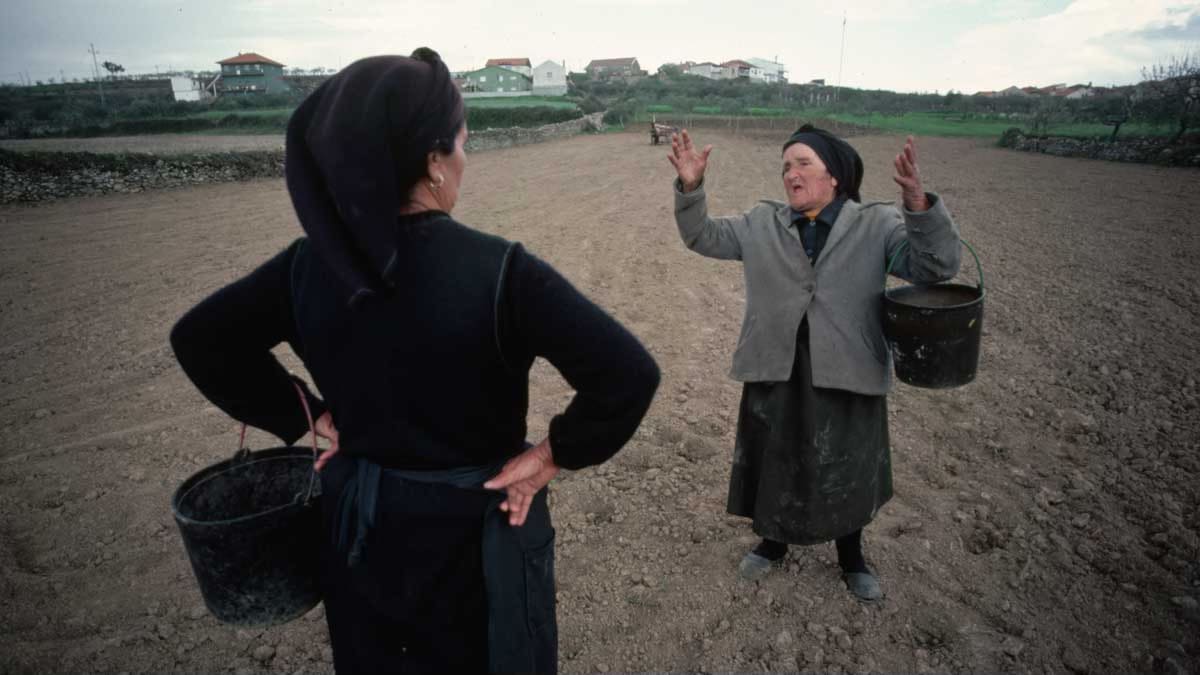How U.S. presidents aged in office
The American presidency is known for being a tough job. The men who serve in America's highest office often emerge from their terms with a few extra gray hairs and wrinkles to match. Fortunately for them, though, those physical hallmarks of a high-pressure gig do not seem to correspond to a decrease in life expectancy.
In fact, throughout history, 23 of the 34 presidents who died of natural causes outlived other men their age group. And that makes sense — presidents have access to top-notch medical care.
We pulled together two images of each president, captured near the beginning and end of their respective terms, so you can be the judge. Here's how each president aged while serving as commander in chief.
George Washington
America's first president was inaugurated on April 30, 1789. Some months later, painter and engraving artist Edward Savage captured Washington's likeness during the winter of 1789-90.
If the image on the right looks familiar, that's because you probably carry around a few of them in your wallet, on the one-dollar bill. The likeness was created in 1798, the year after Washington completed his second term.
John Adams
John Adams served as president for four years, from 1797 to 1801.
These two portraits were created three years apart, in 1797 and 1800, respectively.
Thomas Jefferson
When Thomas Jefferson was elected in 1800, he had already served as secretary of state and vice president in the two preceding administrations. Jefferson was a two-term president. He served from 1801 to 1809.
James Madison
Jefferson's Virginian compatriot James Madison served as commander in chief from 1809 to 1817. These portraits show Madison in his first and last year in office.
James Monroe
Monroe signed the Missouri Compromise at the end of his first term. The bill admitted Missouri as a slave state and otherwise outlawed slavery north of Mason-Dixon line.
Monroe served in the White House from 1817 to 1825.
John Quincy Adams
Like his father, President John Adams, this Adams also only served one term as president. He was the chief executive from 1825 to 1829, losing the 1828 election to Andrew Jackson.
Adams did not attend Jackson's inauguration.
Andrew Jackson
Famously pro-slavery and anti-aristocracy, this soldier-turned-politician served as commander in chief from 1829 to 1837.
Martin Van Buren
Van Buren served just one term as president. He was in office from 1837 to 1841.
William Henry Harrison
These two portraits of William Henry Harrison were created just one year apart, in 1840 and 1841.
Harrison got sick and died just 31 days into his term. He was the first president to die in office.
John Tyler
Tyler was the vice president when Harrison took office. He was elevated to the presidency upon Harrison's death in 1841. At the end of the term, Tyler launched a brief election campaign but withdrew from the race.
James K. Polk
This Tennessee statesman is considered a protégé of President Andrew Jackson. Unlike Jackson, Polk served just one term, from 1845 to 1849.
Zachary Taylor
Taylor was the second American president to die in office. Sixteen months into his term, Taylor contracted severe gastroenteritis and died soon after.
Speculation continues to this day regarding the cause of Taylor's demise. One popular theory is that Taylor fell victim to an assassination attempt by pro-slavery Southerners. Another competing hypothesis is that he died after eating contaminated food.
Millard Fillmore
Taylor's vice president, Millard Fillmore, stepped in following Taylor's death. He finished out Taylor's term and did not seek a new term.
Franklin Pierce
New Hampshire's Franklin Pierce served one term as president. Historians rank him as one of the worst American presidents ever. He received low marks for his support of pro-slavery legislation.
James Buchanan
Buchanan served one term as president, from 1857 to 1861.
Abraham Lincoln
Lincoln was elected twice, but served just over four years. He led the nation during the Civil War and signed the Emancipation Proclamation before being assassinated by Confederate sympathizer John Wilkes Booth in 1865.
The photo on the right was taken less than one week before his death.
Andrew Johnson
Johnson stepped into the presidency following Abraham Lincoln's assassination in 1865 and served the rest of what would have been Lincoln's second term.
Johnson did not earn the Democratic nomination in 1868. He left office in 1869.
Ulysses S. Grant
Before he was elected president, Grant was the commanding general of the Union Army during the Civil War.
He served two terms as president, from 1869 to 1877.
Rutherford B. Hayes
During Hayes' only term, he ended the Reconstruction era and allowed for the imposition of Jim Crow laws in the South. He did not seek reelection.
James A. Garfield
Garfield was assassinated just a few months into his term in office. Both the inaugural cameo (left) and the photograph (right) were created in 1881.
Chester A. Arthur
Arthur succeeded to the presidency following James A. Garfield's death. He served just one term, from 1881 to 1885, that was marked by poor health.
Grover Cleveland
Though he ran as a Democrat, Cleveland was a champion of fiscal conservatism.
He entered his first term (1885 to 1889) as a bachelor, but married college student Frances Folsom in 1886.
Benjamin Harrison
Harrison served just one term, from 1889 to 1893. He is remembered for landmark economic legislation, including the Sherman Antitrust Act of 1890.
Grover Cleveland
After returning to private life for four years, Cleveland re-emerged on the national political stage to secure the Democratic nomination. He served his second term as president from 1893 to 1897.
He is the only president in U.S. history to serve two non-consecutive terms.
William McKinley
McKinley was assassinated a few months into his second term. He served from 1897 to 1901.
On the left, an unknown photographer snapped a photo of William McKinley during his first inaugural address in 1897.
The photo on the right shows McKinley at the 1901 Pan-American Exposition in Buffalo, New York, just one day before he was shot and mortally wounded during a public appearance at the fair.
Theodore Roosevelt
Roosevelt assumed the office of president following McKinley's assassination. He was elected to his own term in 1904.
Roosevelt was just 42 when he entered office, the youngest to do so in American history.
William Howard Taft
Taft was a close friend of Theodore Roosevelt and easily earned the Republican nomination in 1908. He served one term as president and then lost a reelection bid to Woodrow Wilson.
Woodrow Wilson
This Princeton University academic was 56 when he was inaugurated in 1913. He served two terms in the White House.
Wilson suffered a stroke during his second term, leaving him paralyzed on his left side and partially blind. He died in 1924, three years after leaving the White House.
Warren G. Harding
Warren G. Harding suffered a fatal heart attack two years into his presidency. He was in office from 1921 to 1923.
Harding was well-liked during his turn in the White House, but scandals — like the Teapot Dome bribery scheme — emerged after his death and greatly damaged his reputation.
Calvin Coolidge
Coolidge stepped into the role of president following Warren G. Harding's death. He was 51 when he was sworn into office. He was easily elected to his own term in 1924.
Though Coolidge enjoyed great popularity during his time in office, historians rank him as a middling performer who didn't put the country's strong economy to good use.
Herbert Hoover
Hoover served one term, from 1929 to 1933, at the beginning of the Great Depression.
Franklin D. Roosevelt
Roosevelt won an unprecedented four presidential elections. Only later was a two-term limit for the nation's highest office added to the U.S. Constitution.
He was 51 when he was inaugurated in 1933. During his 12 years in office, FDR oversaw the New Deal and led the nation through most of the second World War.
Roosevelt died, at 63, shortly after his fourth term began and just months before the end of World War II.
Harry S. Truman
Truman assumed office upon Roosevelt's death. Shortly after he took the oath, he presided over V-E Day, the victory of Allied forces in Europe. He also gave the order to drop two atomic bombs on Japan in August 1945.
Truman was elected to his own term in 1948. He was 68 when he left office in 1953.
Dwight D. Eisenhower
This Cold War-era president, the former supreme commander of Allied forces in Europe, oversaw the establishment of NASA. He served two terms, from 1953 to 1961.
John F. Kennedy
Kennedy was just shy of his third year in office before his assassination. He was 43 when he was elected and 46 when he was shot and killed in Dallas.
The photo on the right was taken the morning of his death.
Lyndon B. Johnson
Johnson was sworn into office on Air Force One, only hours after John F. Kennedy was assassinated. Johnson was elected to his own term in 1964.
Johnson did not seek reelection in 1968. He was 60 when he left office in 1969.
Richard Nixon
Nixon was 56 when he was inaugurated in 1969. In 1972, he was reelected in one of the biggest landslides in American history.
He resigned in 1974 after the Watergate scandal was exposed and it became clear that impeachment was inevitable.
Gerald Ford
Gerald Ford took over following Nixon's resignation. He lost his bid for a full term in 1976, and left office in January 1977.
Jimmy Carter
Carter's one-term presidency was marked by economic stagnation and the Iran hostage crisis. He served from 1977 to 1981.
Ronald Reagan
Reagan served two terms as president and left with high approval ratings.
Reagan was just a few weeks shy of his 70th birthday when he first took the oath of office, and was 77 when he left.
George H. W. Bush
George H. W. Bush served one term in the Oval Office. Before becoming president, Bush served as Reagan's vice president for eight years.
Bill Clinton
Clinton was a two-term president. His second term was mired by scandals and impeachment. Nevertheless, Clinton left office with the highest approval rating of any president since the second World War.
Clinton was 46 when he took the oath of office.
George W. Bush
George W. Bush, the oldest son of 41st President George H.W. Bush, defeated Al Gore in the notoriously close 2000 presidential election. He was 54 at his inauguration.
Bush's tenure as president is often defined by two things: His response to the September 11 attacks and his handling of the aftermath of Hurricane Katrina.
Barack Obama
Obama spent eight years as president of the United States. He was 47 at his first inauguration and 55 when he exited the White House.
Donald Trump
Donald Trump was elected in 2016. He lost his bid for reelection to Joe Biden four years later.
He was 70 years old at his inauguration. The photo on the right shows him at age 74, at a rally in Washington on January 6, 2021. After the president's speech, in which he continued to falsely claim he won the election, his supporters stormed the Capitol, smashing windows and breaching the House and Senate chambers.
